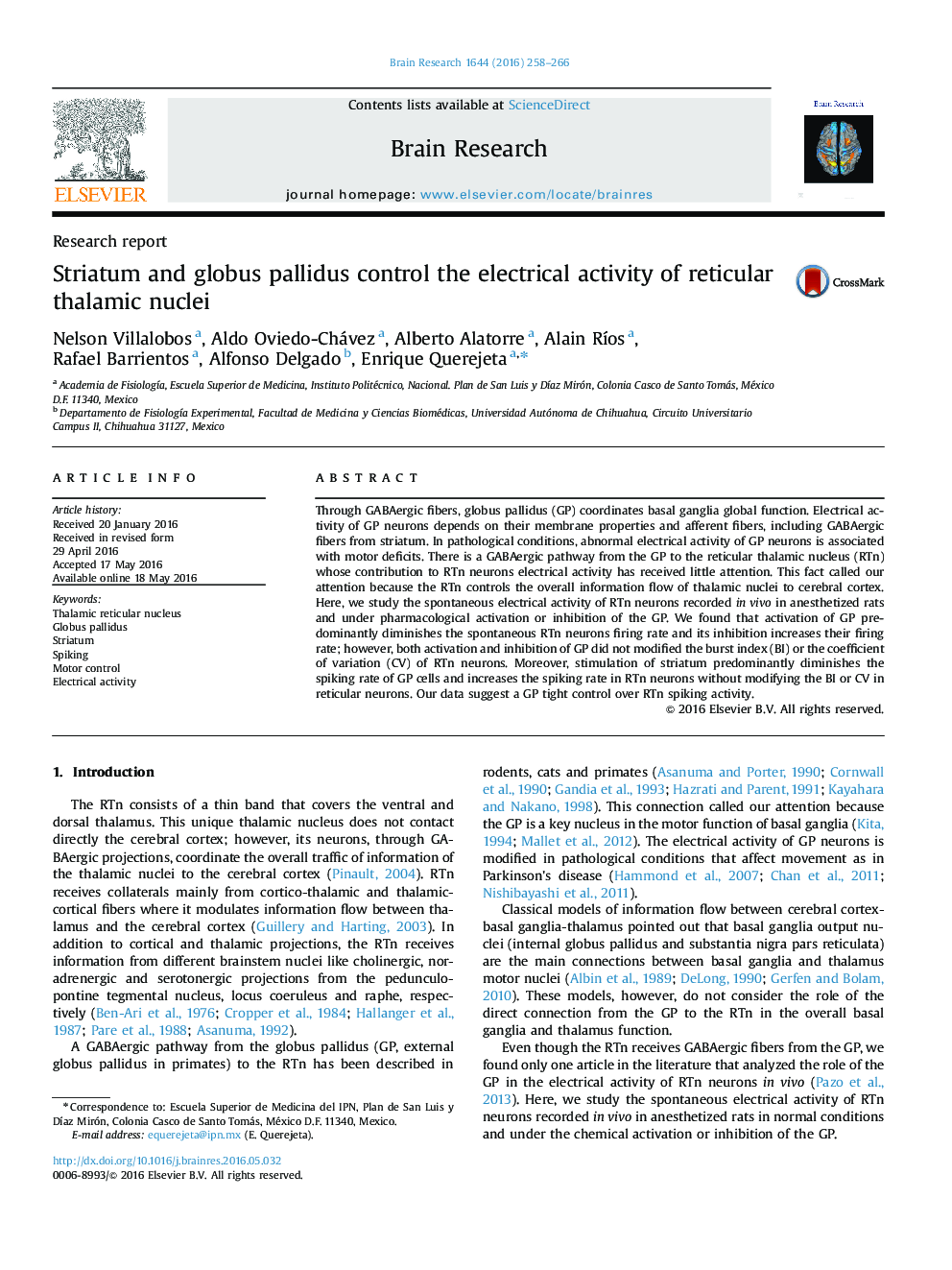| Article ID | Journal | Published Year | Pages | File Type |
|---|---|---|---|---|
| 6262450 | Brain Research | 2016 | 9 Pages |
â¢First report on the control of reticular thalamic nucleus spiking by the globus pallidus.â¢Activation of striatal and pallidal neurons modify the mean spiking rate of reticular thalamic nucleus neurons.â¢Globus pallidus controls reticular thalamic nucleus neurons spiking activity without altering their firing pattern.
Through GABAergic fibers, globus pallidus (GP) coordinates basal ganglia global function. Electrical activity of GP neurons depends on their membrane properties and afferent fibers, including GABAergic fibers from striatum. In pathological conditions, abnormal electrical activity of GP neurons is associated with motor deficits. There is a GABAergic pathway from the GP to the reticular thalamic nucleus (RTn) whose contribution to RTn neurons electrical activity has received little attention. This fact called our attention because the RTn controls the overall information flow of thalamic nuclei to cerebral cortex. Here, we study the spontaneous electrical activity of RTn neurons recorded in vivo in anesthetized rats and under pharmacological activation or inhibition of the GP. We found that activation of GP predominantly diminishes the spontaneous RTn neurons firing rate and its inhibition increases their firing rate; however, both activation and inhibition of GP did not modified the burst index (BI) or the coefficient of variation (CV) of RTn neurons. Moreover, stimulation of striatum predominantly diminishes the spiking rate of GP cells and increases the spiking rate in RTn neurons without modifying the BI or CV in reticular neurons. Our data suggest a GP tight control over RTn spiking activity.
